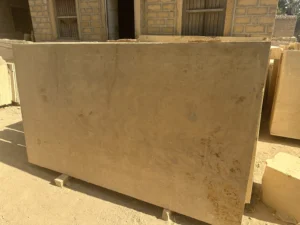What is the use of yellow stone in jaisalmer ?
Jaisalmer, a historic city in the heart of the Thar Desert in Rajasthan, India, is renowned for its distinctive yellow sandstone, often referred to as “Golden Stone” or “Jaisalmer Stone.” This article delves into the various uses of this unique yellow stone, which has not only shaped the city’s architecture but also contributed significantly to its cultural and economic landscape.
Historical Significance
The use of Jaisalmer’s yellow stone dates back centuries, playing a pivotal role in the city’s architectural heritage. This sandstone was extensively used in constructing the iconic Jaisalmer Fort, which stands as a testament to the stone’s durability and aesthetic appeal. The fort, along with various other havelis (traditional mansions), temples, and cenotaphs in the city, showcases intricate carvings that are characteristic of the stone’s malleability and finesse.
Architectural Marvel
One of the primary uses of Jaisalmer’s yellow stone is in architecture. Its unique golden hue, which seems to glow at sunrise and sunset, gives the city its nickname “The Golden City.” The stone is favored for its ability to be carved into elaborate designs, making it a popular choice for building ornate palaces, temples, and homes. It’s not just limited to historical structures; modern architects also use this stone to add a touch of tradition and elegance to contemporary designs.
Economic Importance
The quarrying and processing of Jaisalmer’s yellow stone is a significant economic activity in the region. It provides employment to a large number of people in the quarries and in the stone carving industry. The export of this stone to various parts of India and abroad contributes substantially to the local economy.
Cultural Symbolism
Jaisalmer’s yellow stone is not just a building material but also a cultural symbol. It represents the artistic heritage of the region, with the stone carving craft being passed down through generations. The intricate jali work (lattice screens), chhatris (elevated, dome-shaped pavilions), and other traditional Rajasthani architectural elements made from this stone are a source of local pride and tourist attraction.
Environmental Considerations
While the stone is celebrated for its beauty and utility, it’s important to consider the environmental impact of quarrying. Sustainable practices and regulations are necessary to ensure that the extraction of Jaisalmer’s yellow stone does not lead to environmental degradation or a reduction in the stone’s availability for future generations.
Conclusion
Jaisalmer’s yellow stone is an embodiment of the city’s rich history, cultural identity, and architectural grandeur. It goes beyond being a mere construction material, representing a legacy of craftsmanship and tradition. While it continues to contribute to the economic prosperity of the region, it’s imperative to balance its use with environmental sustainability to preserve this golden legacy for future generations.


